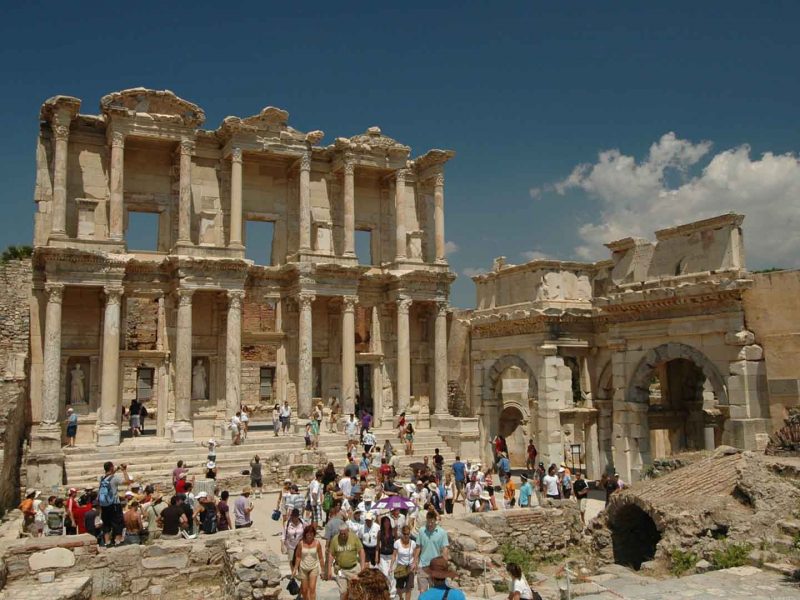Anatolia is described as the cradle of civilizations. Indeed, many ancient tribes and civilizations prevailed in Anatolia, and they were erased from the stage of history, leaving only their ruins. Roman Empire is obviously one of the most spread and developed state of its time, leaving many ruins in its geography, including Turkey.
The Greek Hellenistic culture, which started with the invasion of Alexander the Great in 4th century BC, influenced the creation of present European civilization. The Hellenistic culture evolved into the Roman Empire, founded in the 27 BC, and reigned until 395 AD. Later on, the Roman Empire divided into two parts as West and East and ended with the conquest of İstanbul by Sultan Mehmet in 1453. However, many works from the Roman Empire still exist today. This civilization, especially seen in the Mediterranean basin and its surroundings, stands out with its architectural works. The Roman ruins in Turkey constitute 80 percent of our country’s touristic portfolio.
Ancient City of Ephesus
These structures, which we call antique ruins or ancient city, carry the signatures of many civilizations,. The most distinctive of them is the ancient city of Ephesus. The ancient city of Ephesus is located in the Seljuk district of Izmir. Its history starts from the 6th millennium BC. However, the ruins that remain today have the traces of the Roman period. When visiting, you should reserve a full day for a guided tour.

Facade of ancient Celsius Library in Ephesus, Turkey.
Pergamon Ancient City
The Pergamon ancient city is located in the district of Bergama in Izmir. It is a large settlement with an amphitheater consisting of 50 thousand people and an open theater of 30 thousand people. The ruins of the Viran Gate, which survived to the present, are the arches of the theater.

Trajan Temple columns in ancient city of Pergamon, Turkey.
Ancient City of Miletus
The ancient city of Miletus is 30 kilometers away from the town of Söke in Aydın, and it is one of the port cities. The 15000-person theater from Roman times is one of the most important works taken in the restoration. In addition, you must see the Roman baths and religious buildings such as Delphinion, Agora, and Gymnasium. Faustina Bath, located on the South Agora side, is one of the most popular tourist destinations.

Ancient roman theater at Miletus in southern Turkey.
Knidos Ancient City
This ancient city in Datça, Muğla became the center of science in the Roman period and Hellenistic period. Knidos Ancient City hosts many historic ruins, is dedicated to theaters and temples, and is located just above the sea against a magnificent landscape.
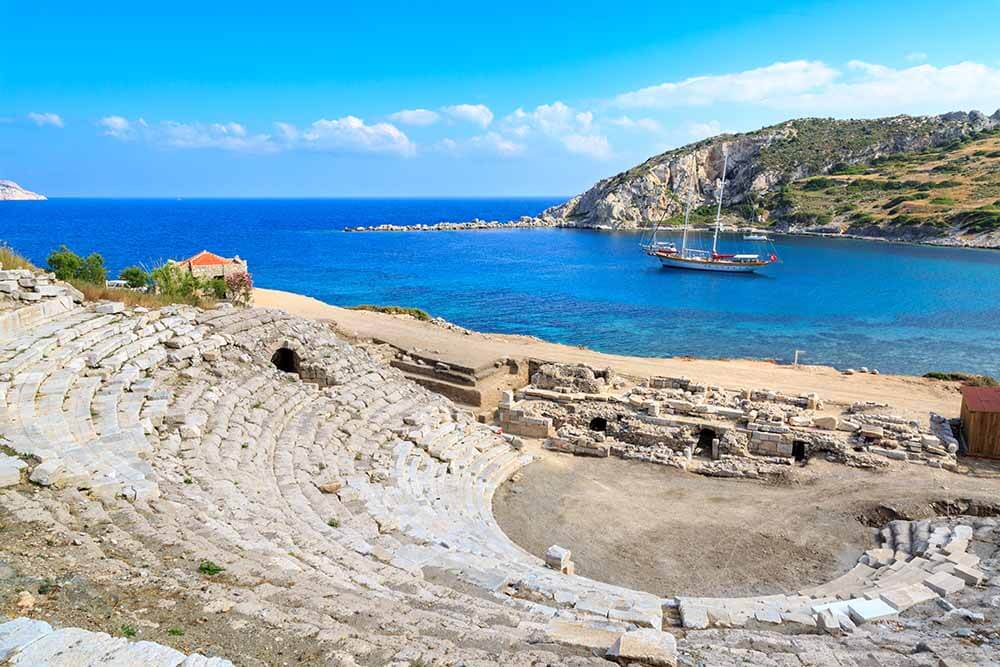
Amphitheater of ancient Greek City Knidos in Datça, Turkey.
The Ancient City of Olympos
Almost all of the ancient cities coming from the Roman times are the port cities. The ancient city of Olympos is one of them and it is located in Kumluca, Antalya. This ancient city is located amidst magnificent nature, and is also one of the breeding areas of Caretta Carettas. The ancient city of Olympos, which was attacked by pirates in its period, carries the traces of both the Hellenistic, Roman and Lycia periods.
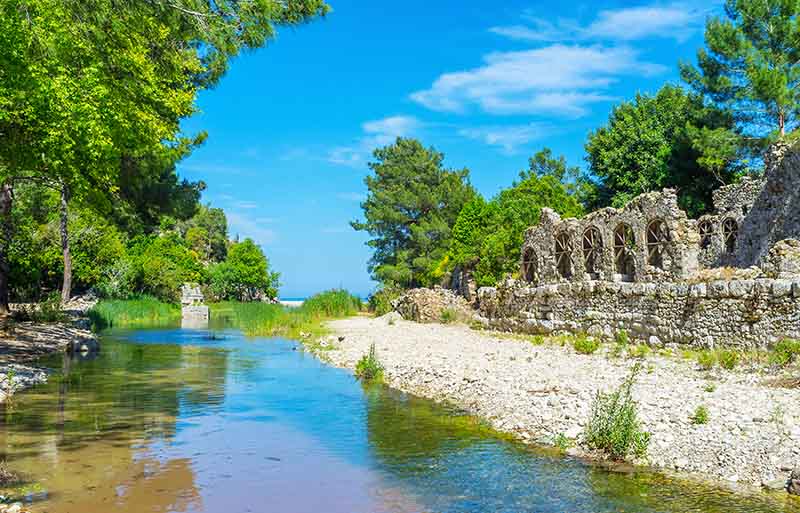
The walk along the narrow Olympos stream with a view on the ancient ruins of Lycian town of Olympos, Turkey.
Xanthos Ancient City
Being the pearl of the Aegean and one of its holiday resorts, Fethiye boasts historic structures and natural beauty. Xanthos Ancient City was used as the administrative center during the Lycia period. Then, it became a center of attraction of Byzantine rulers by entering the Roman domination. The ruins and arches in the ancient city are on the UNESCO World Heritage List and are very attractive for photographers.
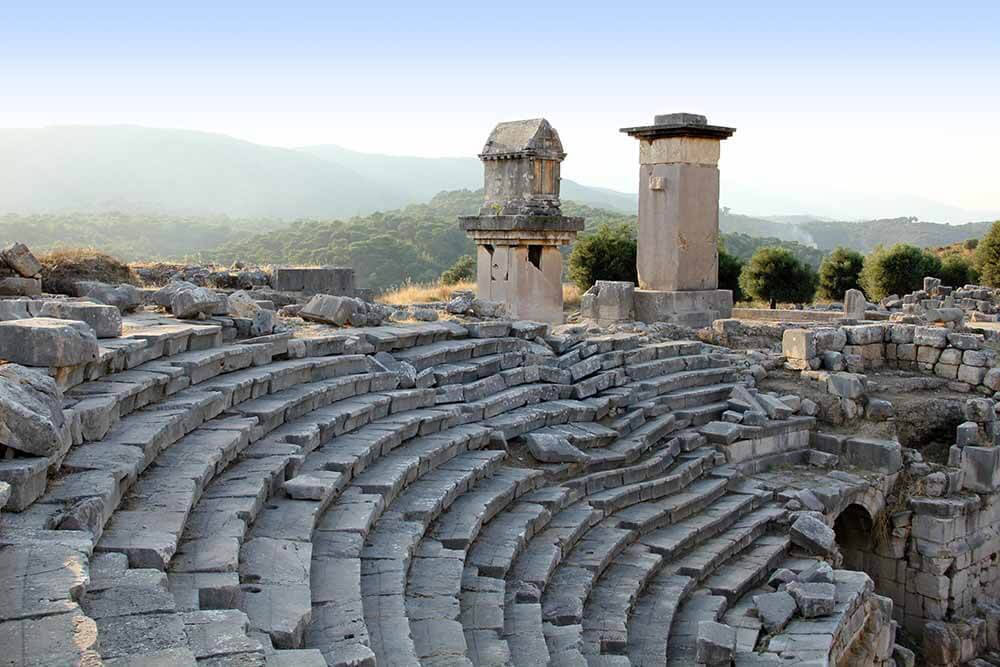
Xanthos ancient city amphitheater and rock-cut tombs.
Aperlai Ancient City
The history of Aperlai ancient city dates back to the 5th century BC. It is a port city founded as a Lycian city. The ancient city is located in a magnificent location between Kaş and Kekova in Antalya, and it is especially indispensable for the Roman nobles. It was mostly visited by monks and priests. The Necropolis cemetery on the Southern slope of the city is adorned with Roman ruins and many sarcophagi. Some of the sarcophagi are located in the sea, creating a suitable location for scuba diving.
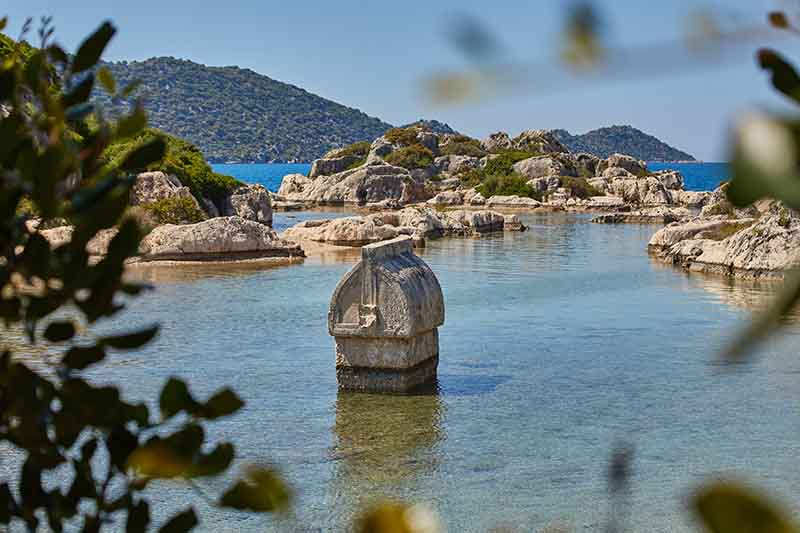
Coast of the island in the Mediterranean sea, picturesque with the ruins of ancient Lycian towns and tombs-sarcophagi of Aperlai, Simena Teimussa Dolihiste.
Zeugma Ancient City
The ancient city of Zeugma is known all over the world due to the Gypsy Girl Mosaic. It was founded by one of the commanders of Alexander the Great in the 3rd century BC. The ancient city of Zeugma takes place in the Nizip district of Gaziantep and is also an open air museum with many excavations. The valuable Roman mosaics are exhibited in the Zeugma Mosaic Museum.
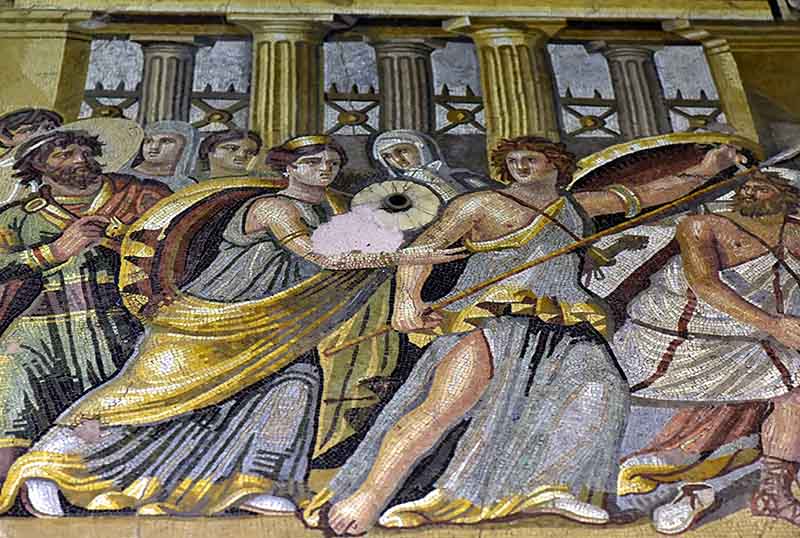
Akhilleus Mosaic, The Ancient City of Zeugma, Poseidon Villa.
Hattusa Ancient City
The ancient city of Hattusa is named on the UNESCO World Heritage List and located in Çorum. The ancient city dates back to the time of the Hittites. The Phrygian period is also reflected in this ancient city. However, in recent years, many remains belonging to the Byzantine and Roman periods have been found and started to be exhibited. Inscriptions, reliefs, nails, and doors are located in this region.
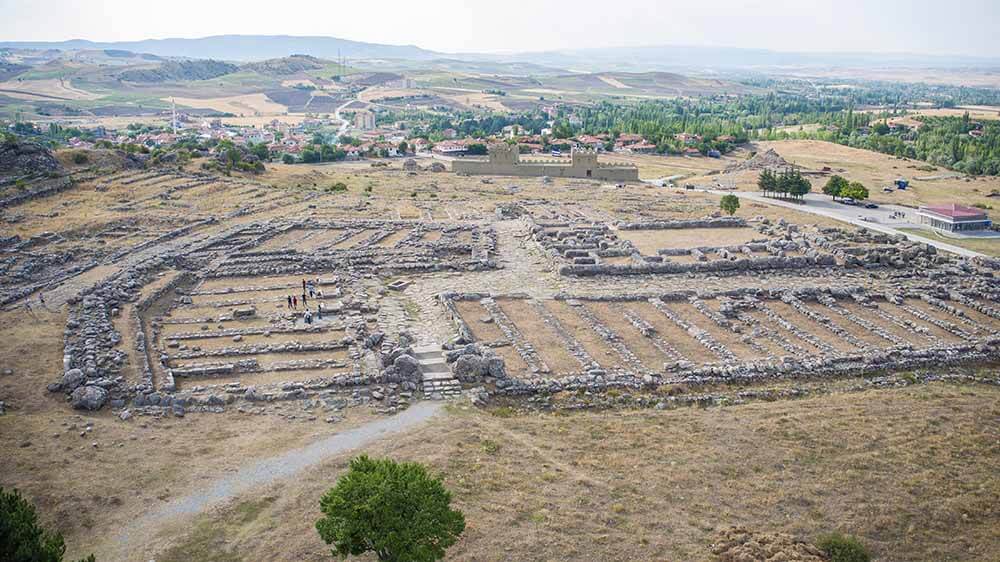
Aerial view of The Hattusa that is The capital of the Hittite Civilization, Corum.
The Roman Ruins in Istanbul
In addition to the ancient cities which we mentioned above, mostly in the Aegean Region, the Roman ruins in Istanbul are the most popular places for tourists. Among these, the most known are “Arkadius column, Çemberlitaş column, Goths column, Constantine’s column, Markianos column, and Theodosius obelisk”. Further, “Million Stone, Theodosius Triumphal Arch, Basilica Cistern, and Bozdoğan Arch” are important works of the Roman and Byzantine period that you should see in Istanbul.

Column of Constantine (Çemberlitaş monument) in Istanbul, one of the Roman ruins in Turkey.

